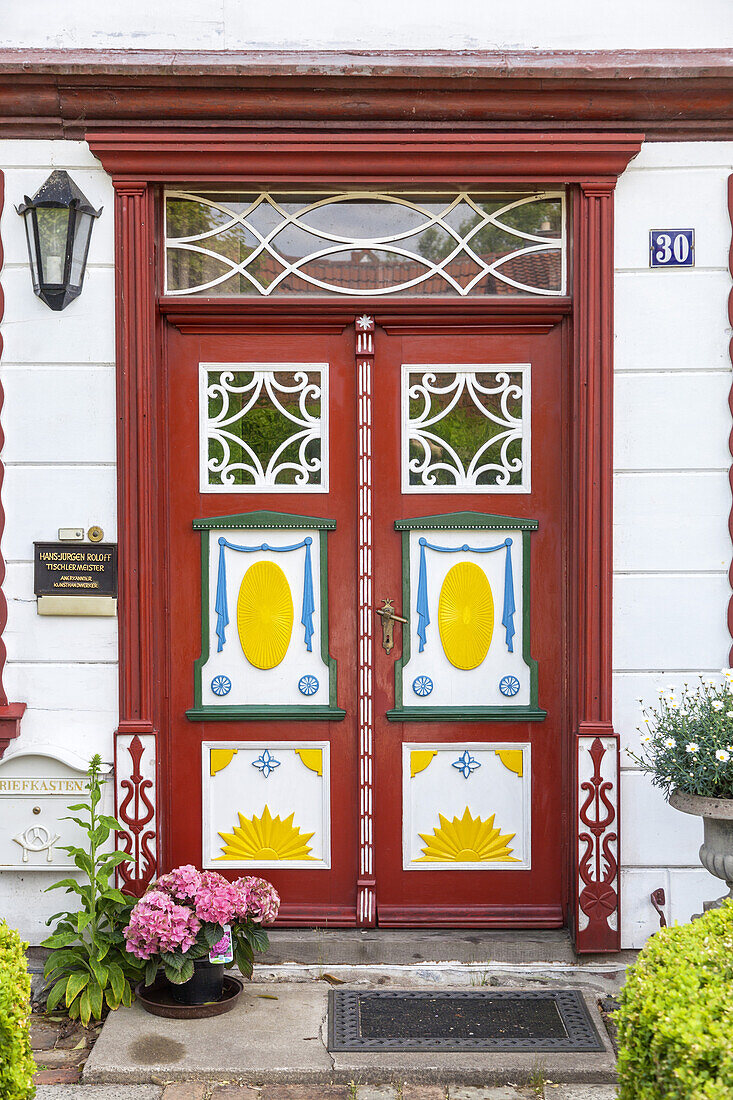The famous Darß doors may soon cease production. René Roloff and his brother run the last carpentry shop still crafting these traditional doors, facing an uncertain future despite high demand.

The last craftsmen of a dying art
In the Baltic Sea town of Prerow, between Rostock and Greifswald, brothers René and Dirk Roloff, aged 59 and 55 respectively, handcraft intricately carved and colorfully painted doors. On the Darß peninsula, they are the last to produce these namesake doors in the traditional manner since German reunification.
“The traditional craft of carpentry is dying out,” says René Roloff, “even though many young people would like to do what we do.” The brothers alone create the designs, ornaments, and decorations; they select the wood and colors, and finally paint the doors, much like their great-great-grandfather did.
A symbol of status and craftsmanship
In the past, a Darß front door was considered a status symbol, affordable only to the wealthy. The most popular motifs include suns, tulip bouquets, blossoms, ships, swans, and more recently, cranes – all symbols of good fortune, as Roloff explains.
Creating a genuine Darß door requires, above all, time. The brothers can produce a maximum of ten new doors per year, yet the demand far exceeds their capacity. Their clientele comes from all over, with Roloff noting, “Every second customer lives outside the Darß, in the rest of Germany. Some even abroad.”
Prices range from 1,000 euros for a simple door to 10,000 euros and more. Roloff admits that there’s a lot of idealism involved in their work financially. “The artistic component of the work is often difficult to bill, as many customers have price limits.”

Challenges in production and succession
Selecting the right wood is crucial for a high-quality Darß door, Roloff explains. The brothers have extreme requirements: In winter, the wood must withstand temperatures down to minus 10 degrees Celsius, while in summer, the doors can heat up to 80 degrees depending on their color. “Few woods can withstand almost 100°C temperature difference on the surface,” the expert explains.
They used to use pine wood from the Darß, but that’s no longer possible. Partly because customer demands have increased, and partly because only young trees remain on the Darß – all the robust, 80 to 100-year-old trunks have been felled. The wood now comes from Southeast Asia: Meranti, tropical wood, certified from plantations, Roloff emphasizes, though he has never been there himself.
The main problem, however, is that the brothers can’t find a successor. Their children show no interest, and they can’t train apprentices in their small operation.
In Germany, there’s only one professional title for carpenters. The training requires placements at furniture, stair, and window construction companies and in industry. “We can’t offer that,” says Roloff, criticizing this comprehensive approach: “Modern apprentices often can do everything, but nothing properly.”
Instead, Roloff wishes for various specialized professional qualifications in carpentry, to keep the craft skills alive, as in France. Otherwise, carpenters like him will soon literally die out, he says, similar to shoemakers and goldsmiths. And with them, the knowledge of Darß doors would be lost forever.





